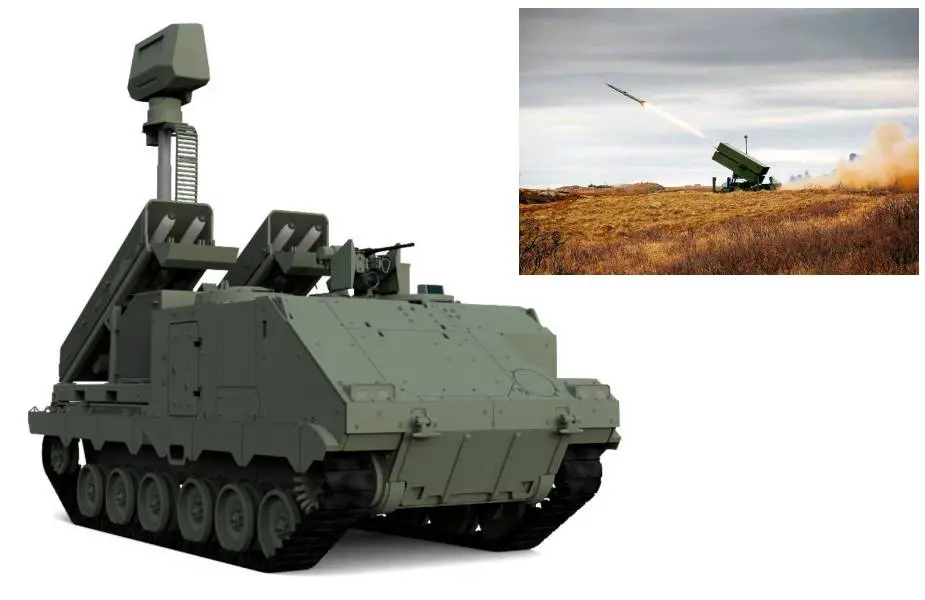Following a statement published by the Dutch Ministry of Defense on June 5, 2023, the Dutch Ministry of Defence is merging its projects to upgrade short and medium-range air defense systems, as announced by State Secretary Christophe van der Maat. He affirmed that a single supplier will be contracted to provide both missiles and launching installations, to optimize the integration of both capabilities. The Dutch armed forces will receive a new modernized version of the NASAMS as well as a new tracked armored air defense vehicle based on the German-made Armoured Combat Support Vehicle G5 (ACSV G5).
Follow Army Recognition on Google News at this link

New air defense systems of the Dutch armed forces will include modernized NASAMS and tracked armored air defense vehicles. (Picture source Dutch MoD)
Van der Maat highlighted the potential of the planned system, stating that it would provide comprehensive protection for maneuvering units as well as crucial infrastructure and territories. This new capability will operate in a continuously synchronized, wireless network, enabling a seamless and lossless interplay between the systems. The Secretary emphasized the strategic importance of the shortest possible reaction times between radar detection of an aerial threat and the subsequent missile launch, as evidenced by the current conflict in Ukraine.
A single supplier, identified through comprehensive market research, is deemed capable of meeting the stringent requirements for the upgrade. This contract is anticipated to be awarded to the Kongsberg Defence & Aerospace (KDA) consortium from Norway, working in conjunction with Raytheon, the US-based company. The strategic partnership of these two companies, already established with various NATO partners, bolsters international cooperation.
The first batch of upgraded medium-range systems is expected to be operational by 2026, extending their range up to 50 kilometers. This schedule implies that the existing Medium Range Air Defence (MRAD) systems will remain in service until at least 2027. The upgraded short-range systems, capable of coverage up to 15 kilometers, are scheduled for availability by 2028. These Short Range Air Defence (SHORAD) systems will be integrated into the Armoured Combat Support Vehicle G5 (ACSV G5).
The ACSV G5 is tracked armored vehicle developed and designed by the German company FFG (Flensburger Fahrzeugbau Gesellschaft mbH). The layout of the vehicle seems similar to the American-made M113 tracked APC (Armored Personnel Carrier) with the powerpack at the front, the driver at the front left side of the hull and a troops or cargo compartment at the rear. According to the vehicle drawing published by the Dutch Ministry of Defense, the air defense version of the ACSV G5 will be fitted with two pods each equipped with two missile launchers.
In the context of the Netherlands' Defence department, the Defense Ground-based Air Defense Command (DGLC) will oversee the deployment of the new air defense. The DGLC currently operates several systems, including Stinger missiles for (very) short-range defense, launched from Fennek vehicles or handheld devices.
The modernization program will also see the phasing out of the current NASAMS medium-range system and the introduction of a modernized NASAMS system with increased coverage. This updated capability complements the long-range Patriot weapon system, which has recently garnered attention due to its deployment in Ukraine.
This initiative underlines the Netherlands' commitment to enhancing both national and international defense capabilities, conforming to NATO's agreed standards. The upgrade will amplify the country's strategic value within EU and NATO frameworks, fostering more robust collaboration with allied nations.














